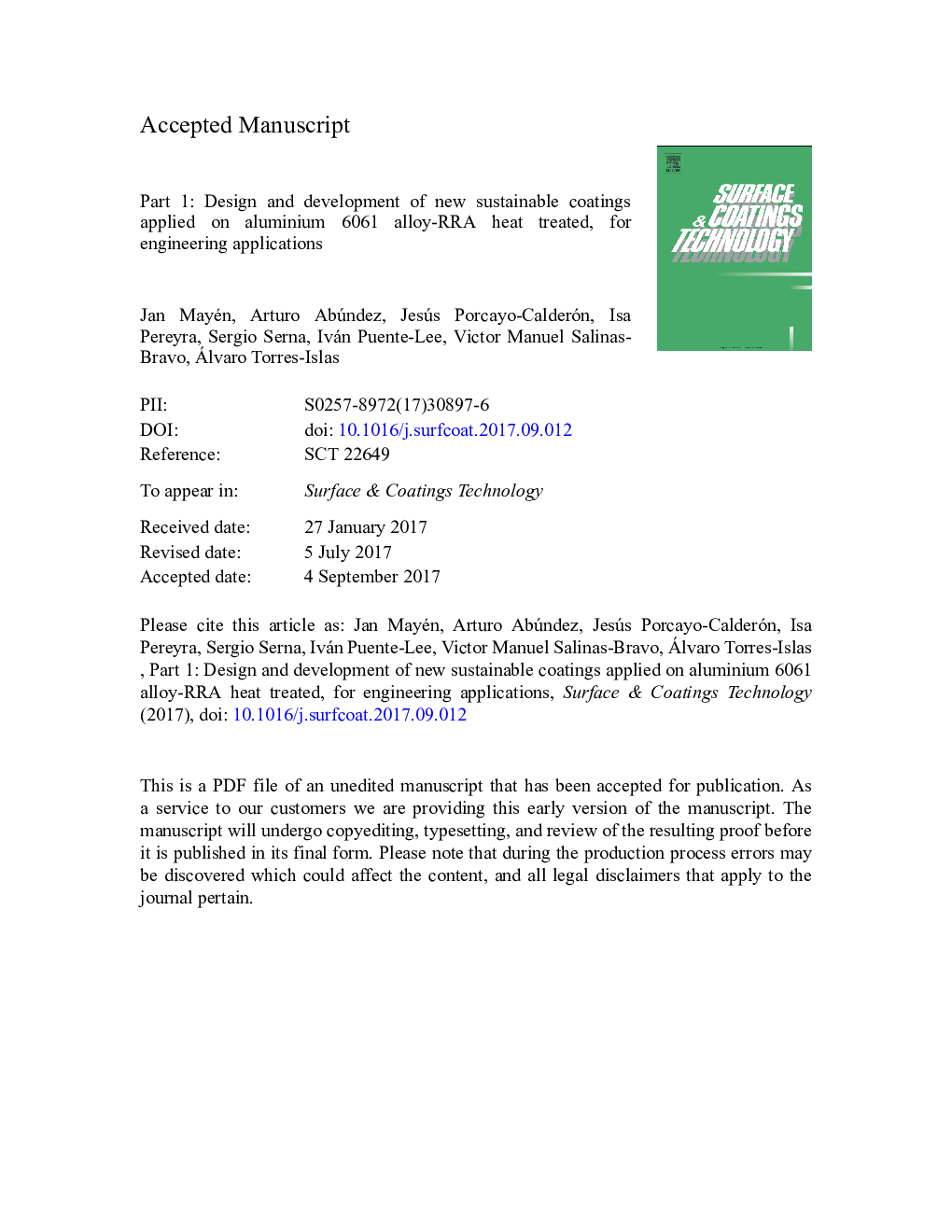| Article ID | Journal | Published Year | Pages | File Type |
|---|---|---|---|---|
| 5464494 | Surface and Coatings Technology | 2017 | 21 Pages |
Abstract
In this work, an aluminium 6061 alloy was subjected to a designed retrogression and reageing (RRA) heat treatment, and also coated with diamond-like carbon (DLC) interphase film by electrodeposition, in order to assess the corrosion protection by potentiodynamic polarization testing when the samples are exposed to a simulated sea environment. The electrodeposition was performed using three sustainable electrolytes: a) 5% CH3COOH electrolyte obtained from sugar cane juice, b) an electrolyte with CH3COOH (obtained from sugar cane juice) + C4H6O6 + C6H8O7 + NaHCO3 and c) a 5% CH3COOH electrolyte for anodizing and DLC deposition. Scanning electron microscopy was performed on the coated samples before the corrosion tests in order to relate polarization resistance (Rp) to the coating microstructural features. The correlation between Rp, corrosion rate (C.R.) and mechanical strength (UTS) to the heat treatments, performed on the coated Al 6061 alloy, was established by a multivariate regression analysis, which allows to find the best combination of the heat treatments and electrodeposition electrolytes for further composite coatings design and development. The electrochemical testing on the electrodeposited films showed that the polarization resistance was greatly increased, from an initial value for the Al 6061-T6 of 126 up to 17,300 Ω cm2 for the coated conditions, which implies a reduction of the corrosion wear about 99.29%.
Related Topics
Physical Sciences and Engineering
Materials Science
Nanotechnology
Authors
Jan Mayén, Arturo Abúndez, Jesús Porcayo-Calderón, Isa Pereyra, Sergio Serna, Iván Puente-Lee, Victor Manuel Salinas-Bravo, Álvaro Torres-Islas,
